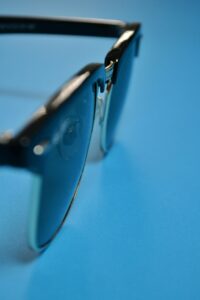Martha is a six year old girl who has quadriplegic cerebral palsy which affects her movements, co-ordination and communication. We were approached by her Case Manager and asked to assess her with a view to using assistive technology to aid her communication and to provide her with stimulating activities.
We had been asked to work alongside a Specialist Speech and Language Therapist to assist in assessing and facilitating improved access to information and assistive technology. This to include ergonomic interventions and recommendations for equipment, software and on-going support for communication development and learning.
Because of her limited movement and arm control we thought that the iPad, with its touchscreen capabilities, might offer possibilities for Martha. Indeed, at our first assessment she was able to both look at and choose pictures of her favourite TV character (Noddy) by swiping the screen if the iPad was held within her reach. This delighted her (and us)!
We then progressed to trying out different methods of holding the iPad, such as a bracket fixed to her wheelchair, so that she could access it independently.
Martha’s success with the iPad meant that her speech and language therapist now had a tool which she could use to develop communication aids and strategies for her. There are a number of low-cost apps, such as TalkBoard, available for the iPad which provide an excellent platform to aid communication.
The development of the concept of ‘cause and effect‘ is essential if an individual is to be able to operate assistive technology, whether operating a DVD or controlling their own environment by switching on lights or opening curtains. Martha had demonstrated through her ability to swipe the screen of the iPad that she did understand the principle of this kind of interaction.
We were aware that Martha used switches at school to control computer equipment and, bearing this in mind, it was a natural progression to connect the switch to her iPad so that she could operate it in this way. However, the iPad cannot easily or reliably be connected to external input devices such as a switch or a mouse although connectors are now being developed for this purpose and we are currently testing one of these. (A review of this will be posted on our website in due course).
We modified a toy so that it would run for a short period of time when a large and colourful switch was pressed. As Martha was highly motivated to make the toy work she soon learned how to operate the switch.
We have now introduced Martha to a laptop with a large switch connected to it. Martha can now watch her favourite videos on the laptop and start and stop them as she pleases using the switch.



